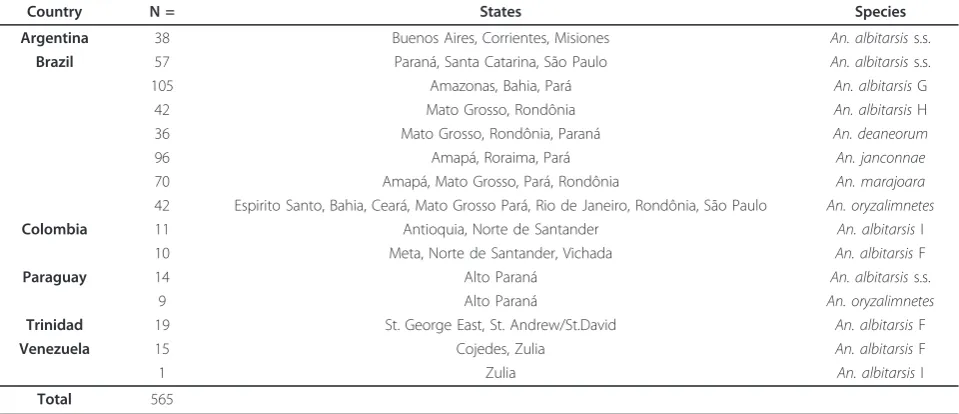DNA barcoding reveals both known and novel taxa in the Albitarsis Group (Anopheles: Nyssorhynchus) of Neotropical malaria vectors
Full text
Figure




Related documents
The fibers heat-treated at 600°C and subjected to preservation heating in NH 3 showed high photocatalytic activity.. Keywords: TiO 2 nanofibers; Electrospinning; Sol –
We extracted different POS tags at each position of each phrase category for each pair of CCTs, based on the ambiguous POS sequences. For example, the third row in Table 9 has “R A
We demonstrate a simple layer transfer technique using Norland Optical Adhesive 61 and show how a 400 nm thin film of hydrogenated amorphous silicon (a-Si:H) on glass can be
Table 3 examines reasons for differences among states in revascularization rates by looking at the relationship between states' total revascularization rates and a set of surrogates
predictable and efficient crossroads supplying blood to normal tissues, tumor capillary beds are a tangle of unexpected intersections delivering red blood cells in uneven
In the model considering physician and practice charac- teristics alone (without case-mix), the characteristics inde- pendently associated with high frustration were younger age,
So, the aim of this study was to assess the magnitude of seat belt use practice and associated factors among taxi and minibus drivers..
Patients were excluded from the study cohort if any of the following were true: (1) no breast cancer diagnosis (ICD-9 = 174.x; ICD-10 = C50.x); (2) received palbociclib as part of